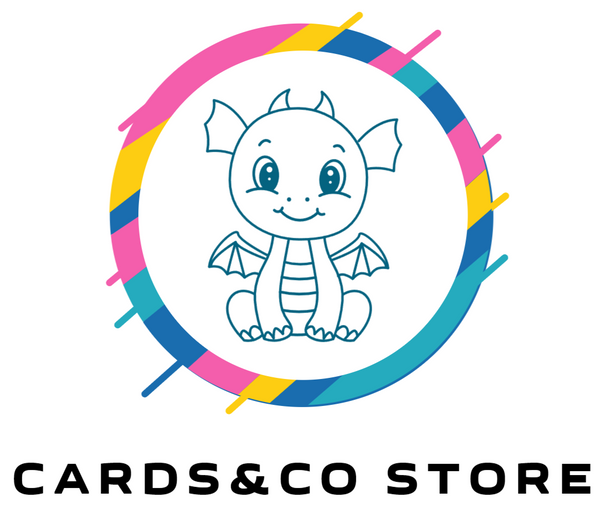A Journey Through Generations: Exploring Japanese Pokémon Card Sets
Share
The world of Japanese Pokémon cards is an exciting one, rich with history and complexity. For collectors and players, understanding the different series and their specificities is essential to deciphering the value and rarity of cards. This guide takes you on a chronological journey through the generations of Japanese Pokémon cards, highlighting the most important series, their unique features, and what sets them apart from each other.
1. Genesis : The Japanese Base Set (1996)
The Pokémon adventure began in 1996 with the release of the Japanese base set, known as the " Pokémon Card Game ". This inaugural set, made up of 102 cards, presents the emblematic characters that will become icons: Pikachu, Charizard, Bulbasaur, Squirtle, and many others. The cards are divided into three categories: Pokémon, Trainer and Energy, establishing the foundations of the game. This set is distinguished by its simple design and original illustrations made by Mitsuhiro Arita, giving a cartoon style to the cards.
2. The Continuation : The Second Generation Sets (1999-2002)
The second generation of Pokémon games sees the arrival of new series of cards.
The "Neo" Series (1999-2000) :
The sets "Neo Genesis," "Neo Discovery," and "Neo Revelation" introduce an "Energy" system that transforms the game mechanics. "Holo" (holographic) cards make their debut, making the illustrations bright and attractive. "Trainer" cards offer players tactical advantages.
The "EX" Series (2001–2002) : Two new series, "EX Team Rocket" and "EX Dragon," focus on powerful Pokémon and innovative strategies. The "EX" mechanic adds more powerful, but more fragile, Pokémon.
3. Evolution : The Third Generation (2002-2005)
The third generation of Pokémon marks a new era with new game mechanics and an evolution of card design.
The "e" Series (2002-2003) : The "e-Card" sets introduced interactive cards with sound and light effects.
The "Ruby & Sapphire" Series (2003-2004) : The "Ruby & Sapphire" sets introduced a new card format with a more modern design, exploring in depth the third generation of Pokémon.
The "EX" Series (2004-2005) : The sets "EX Emerald," "EX Delta Species," and "EX Dragon Frontiers" continue to explore the "EX" mechanics and offer a variety of new cards to collect.
4. The Fusion : The Fourth Generation (2006-2009)
Generation IV merges video games and cards in unique ways, introducing "Pokémon-GX" cards and expanded gameplay.
The "Diamond & Pearl" Series (2006–2008) : The "Diamond & Pearl" sets introduce "Pokémon-GX" cards, which combine the power of "EX" cards with unique special abilities.
The "HeartGold & SoulSilver" Series (2008-2009) : These sets continue to explore the "GX" mechanic and highlight Pokémon from the fourth generation.
5. The New Era : The Fifth Generation (2010-2013)
The introduction of "Pokémon-EX" cards and new game mechanics like "Mega Evolution" mark a new era.
The "Black & White" Series (2010-2012) : The "Black & White" sets introduce the "Pokémon-EX" and "Pokémon-GX" cards, and strengthen existing game mechanics.
The "XY" Series (2013–2016) : The "XY" sets introduce "Mega Evolution", a new mechanic that allows Pokémon to evolve into a more powerful form.
The "Sun & Moon" Series (2016-2019) : The "Sun & Moon" sets continue to explore the "Mega Evolution" and "Pokémon-GX" mechanics, and introduce new gameplay elements like "Pokémon-GX" and "Pokémon-EX"
7. The New Era : The Eighth Generation (2019-2022)
The eighth generation of Pokémon sees the arrival of a new series of cards, with new game mechanics, new Pokémon, and new illustrations.
The "Sword & Shield" Series (2019-2022) : The "Sword & Shield" sets introduce "Pokémon-V" and "Pokémon-VMAX", and continue to explore the "Pokémon-GX" mechanic.
8. The Future : The Ninth Generation (2022-Present)
The ninth generation of Pokémon continues to explore the world of Pokémon cards with new features, new gameplay mechanics, new Pokémon, and new designs.
The "Scarlet & Violet" Series (2022-Present) : The "Scarlet & Violet" sets introduce "Pokémon ex" and "Pokémon-VSTAR", and continue to explore the "Pokémon-V" and "Pokémon-VMAX" mechanics.
Other important series :
There are other Japanese Pokémon card series worth mentioning, even if they didn't mark a major change in gameplay or card design.
Shiny Treasure EX (2012) : A special set that highlights Shiny Pokémon and "EX" cards.
Pokémon 151 (2022) : A commemorative set that celebrates the first 151 Pokémon from the first generation, with "EX" and "Full Art" cards.
Pokémon GO (2020) : A set celebrating the mobile game Pokémon GO, featuring "EX" and "Full Art" cards inspired by the game.
Pokémon Card Game: The Origin (2022) : A commemorative set celebrating the 25th anniversary of the Pokémon game, featuring "EX" and "Full Art" cards inspired by the original base set.
Conclusion : A fascinating journey through time
This journey through the generations of Japanese Pokémon cards has allowed you to discover the characteristics and specificities of each of these series. From the first base sets to the "Scarlet & Violet" sets of the ninth generation, Pokémon cards have evolved in terms of gameplay, mechanics and design. This evolution has enriched the gaming experience and created an exciting universe for players and collectors. The universe of Pokémon cards continues to expand, with new series and new Pokémon created each year.
